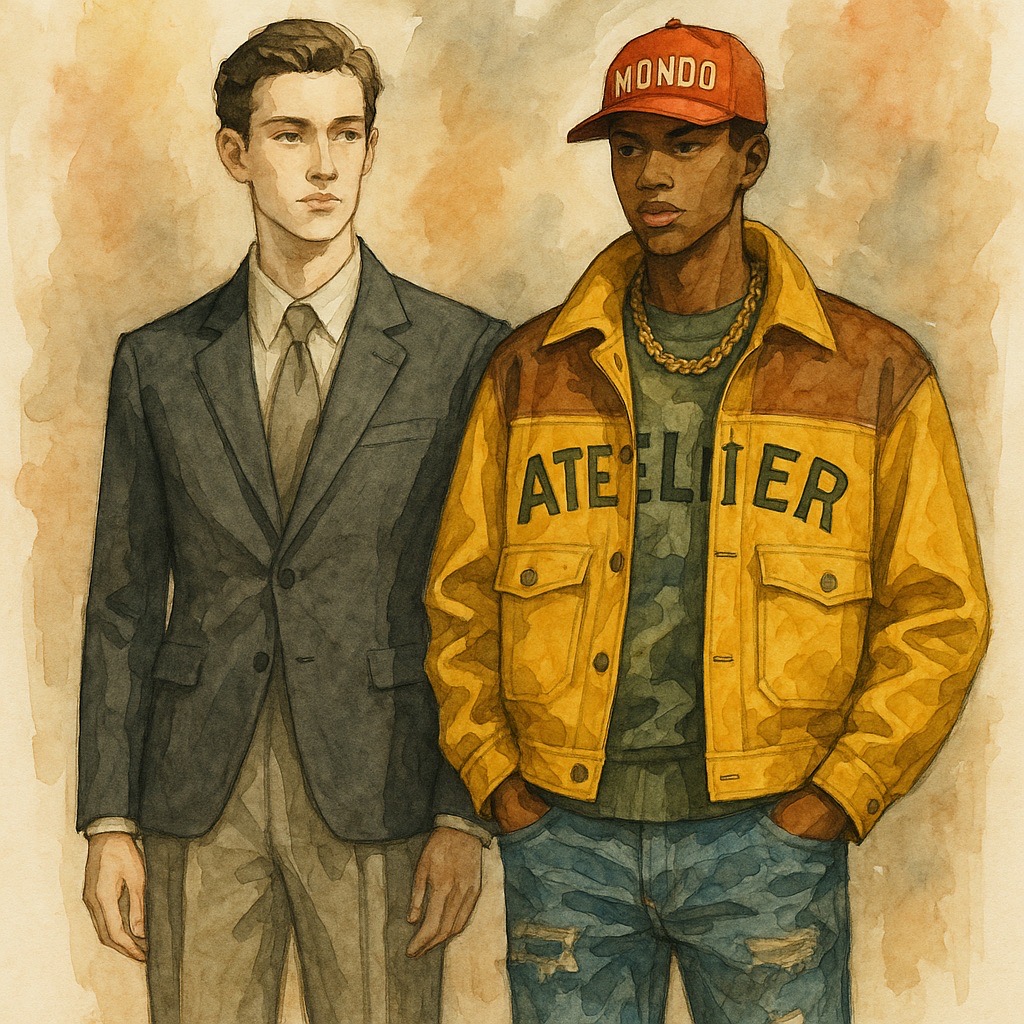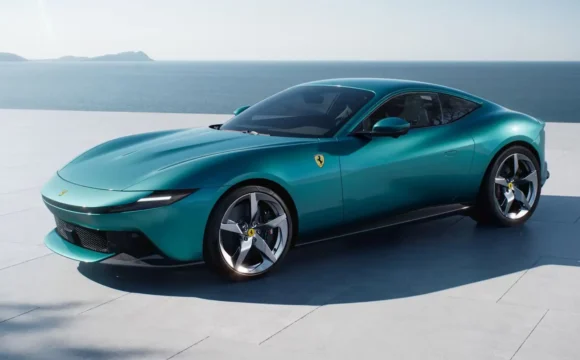In the evolving world of men’s luxury fashion, two recent shows stood out. Not because they shocked, but because they struck a rare balance. Both Jonathan Anderson’s debut at Dior and Pharrell Williams’ latest Louis Vuitton show demonstrated something we don’t see enough in menswear: the ability to generate desire through innovation without sacrificing wearability. In an industry often torn between theatrical effect and commercial viability, these collections may have just pointed toward a new paradigm.
For years, men’s fashion has been caught in a tug-of-war. On one side, spectacle. The kind of theatricality that garners headlines and drives social media engagement. On the other, practicality. Collections that sell, but rarely stir the soul. The result has often been polarizing: runway pieces that look striking under the lights, yet bear little relevance to the realities of modern male dressing. Or, at the other extreme, a sea of interchangeable, well-cut basics that blur into forgettability.
Anderson and Pharrell refused to accept this binary. Instead, they built tension into their work and made that tension the source of seduction.
Jonathan Anderson’s Dior debut was anything but loud. It was quiet, intelligent, and deliberate. Yet beneath the apparent restraint lay a bold reimagining of the Dior man. Precision tailoring met unfinished hems. Bar jackets were styled with cargo shorts. Collars were asymmetrical, ties left casually loose. The result was not rebellion, but redefinition. These weren’t garments designed to shock. They were designed to invite a second look—and then a closer connection. The storytelling wasn’t shouted. It was suggested.
Crucially, the clothes felt wearable. Not in a conservative sense, but in an emotionally lived-in way. These were clothes that allowed the wearer to project his identity, not be consumed by the designer’s. That is a rare feat in luxury menswear. Too often, designers chase the avant-garde without anchoring it in context. Anderson, by contrast, took Dior’s heritage as his baseline and then pulled it gently apart, thread by thread.
If Anderson worked in layered subtlety, Pharrell did the opposite yet arrived at a similarly successful destination. His latest Louis Vuitton collection was maximalist, theatrical, and unapologetically extravagant. It featured endless budgets, A-list attendees, a soundtrack that felt more like a film score than a fashion cue. And yet, beyond the flash, the garments themselves were grounded. Tailoring was sharp. Workwear was elevated. Denim came embroidered but cut to fit. The trunk-motif jackets, the lavish outerwear, the layered accessories: they were directional, yes, but never alienating.
What Pharrell understands and what too few designers grasp is that wearability does not mean playing it safe. It means creating pieces that clients can see themselves in. That they want to live with. His showmanship built a frame, but the desire was in the detail. The collection managed to be both aspirational and attainable, qualities luxury desperately needs to merge more often.
Both designers share a key insight: the modern male luxury client is no longer content with basics, but neither is he seeking costume. He wants identity. He wants distinction. He wants to be part of a story, not just a trend. That’s why both Dior and Louis Vuitton succeeded. Not just visually, but emotionally. They sparked something deeper than applause. They made clients imagine themselves in the clothes. That is where true desirability begins.
It’s also where many brands fall short. They chase novelty for novelty’s sake. They mistake provocation for substance. Or they overcorrect into safe, repeatable, uninspired staples. What Pharrell and Anderson remind us is that the sweet spot lies in between. It is where innovation meets purpose, where narrative meets nuance.
For luxury menswear, this is a call to recalibrate. We don’t need louder statements. We need more meaningful ones. Collections that surprise, yes. But that also stay with us. Garments that elevate the everyday without losing their soul. In short: fashion that remembers its role is not just to dress, but to inspire.
And in an era when men’s wardrobes are becoming more expressive, more personal, and more culturally literate, the stakes have never been higher. It is no longer enough to design for the moment. One must design for meaning. Pharrell and Anderson delivered two very different collections. But they shared one ambition: to reignite desire through relevance. And that, in today’s luxury landscape, is the most innovative move of all.
The article by Prof. Dr. Daniel Langer
⸻
Prof. Dr. Daniel Langer is the founder and CEO of Équité, the leading luxury strategy and creative brand activation firm behind some of the world’s most iconic brand transformations. He serves as Executive Professor of Luxury Strategy at Pepperdine University and also teaches luxury at NYU in New York. Daniel advises luxury brands from global market leaders to ambitious startups on storytelling, client experience elevation, pricing power, and how to engage the next generation of ultra-high-net-worth individuals.
Recognized as a Global Top 5 Luxury Leader and described by The Economist as an “authority in luxury," he is a strategic visionary who has expanded the industry’s understanding of the psychology of luxury through groundbreaking research. A sought-after keynote speaker, Daniel’s masterclasses—The Future of Luxury and The Art of Selling in Times of Uncertainty—have inspired thousands of leaders worldwide. He is the best-selling author of several books on luxury in English and Chinese, the host of the Future of Luxury podcast, and a regular contributor to the world’s leading business and lifestyle publications.
Follow him at daniellanger.digital and instagram.com/drdaniellanger.








